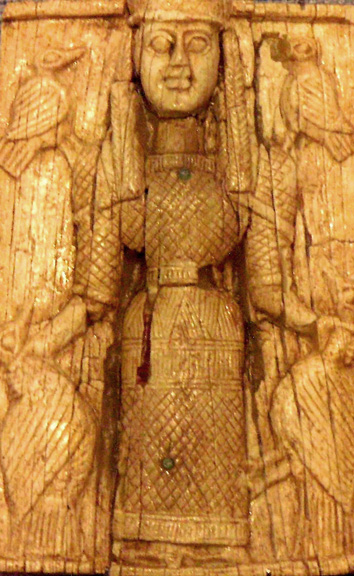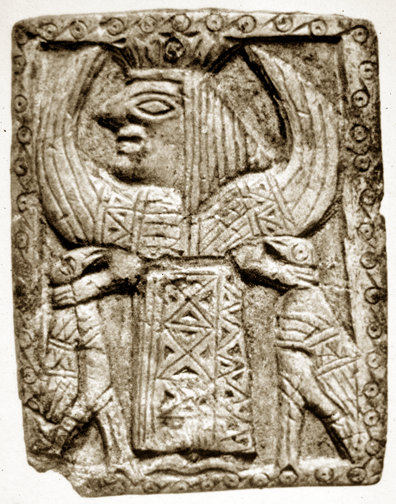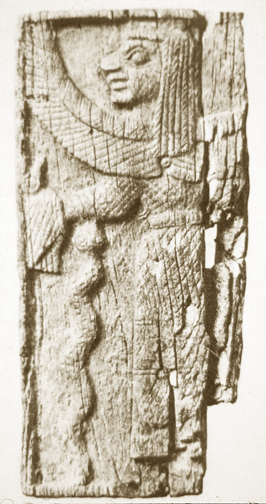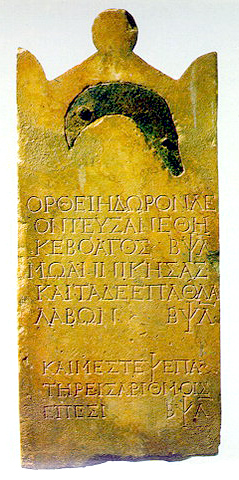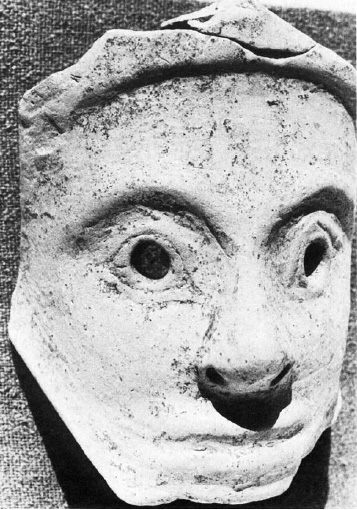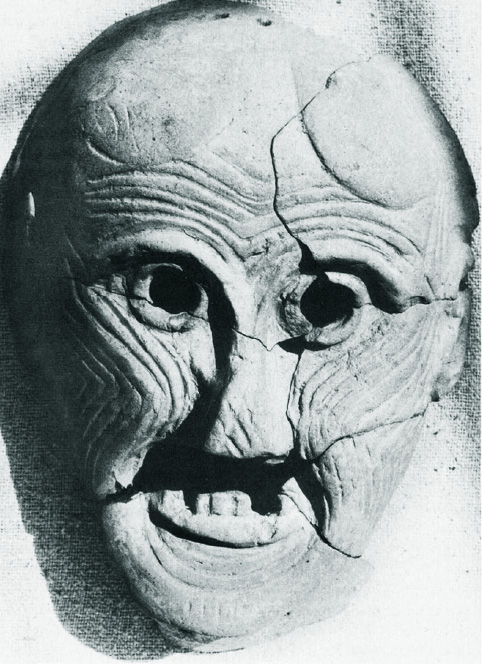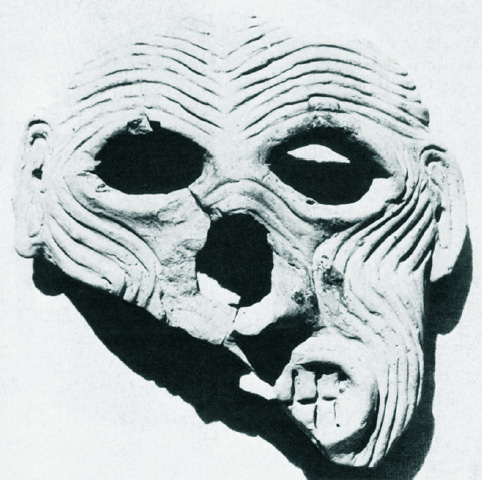Ortheia, Goddess of Sparta
in the Archaic Period, 600s bce
Ortheia was the goddess of Sparta, originally Forthasia,
then Forthaia and Fortheia, and finally Ortheia.
Her name means "straight, upright, standing."
The winged goddess holding birds or lions is usually identified as Artemis, but the qualities of goddesses in the archaic period are often interchangeable. The feathered headdress is a trait of Hera, for example. Ortheia came to be designated as Artemis Ortheia, but not by the Spartans. Carved ivory pin from Sparta.
Plaque of winged goddess with serpent,
from archaic Ortheia sanctuary in Greece.
It has been suggested as an icon of Hekate.
to Ortheia with
an embedded sickle. Inscriptions outside Sparta begin to speak of Artemis Ortheia by the 5th century bce, as the fusion of older forms with the Olympian pantheon proceeded.
Thousands of votive offerings were deposited at Ortheia's sanctuary: ivories, bronzes, small terracotta figurines, lead figurines, and pottery. There were also many hundreds of ceramic masks showing strong Phoenician influence and themes possibly going back to the Babylonian Humbaba grotesques.
Jane Burr Carter, in "The Masks of Ortheia" (1987), traces these masks back to Phoenician ritual theater. She writes that this original context shows that "the deities associated with masks are a female fertility goddess and her consort." She identifies the goddess as Tanit, or as she is called at a Lebanese shrine at Sarepta, Tanit Ashtart. This shrine contained such masks as well as female statuettes playing hand drums, carved ivories, lamps, and beads.
Burr Carter writes that the masks are also connected to "an Aegeanized goddess on Cyprus and Astarte in Palestine and Cyprus." She provides evidence for the spread of asherah pillars to Cyprus, as shown on pottery and vase-paintings. (The original temple of Aphrodite at Paphos had three pillars as the holy of holies.) She proposes that the Spartan sanctuary of Ortheia was founded by Phoenicians.
"Ortheia received dedications of nude terracotta figurines. Her cult had close ties to the worship of the birth-goddess Eileithyia." Images of animals were offered to her, including "sheep, goats, lions, deer, bulls, horses, geese or ducks, eagles, dolphins, fish..." Burr Carter quotes Greek sources about Spartan women's dances called barullika, as well as a custom of men putting on "ugly" female masks.
American Journal of Archaeology, Vol. 91, No. 3, pp. 355-380
One major category of masks represented old women, with swirling wrinkled patterns and, on this one, some missing teeth.
A heavily wrinkled mask with grimacing mouth. The broken-off nose gives it a skull-like quality.
Max Dashu Suppressed Histories Archives | Articles | Gallery
